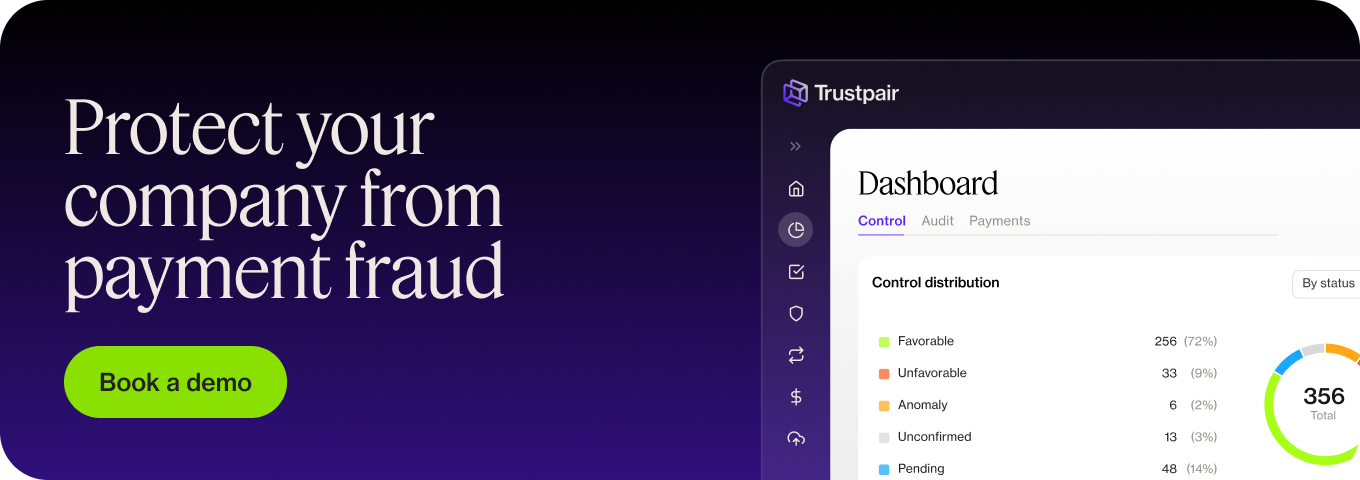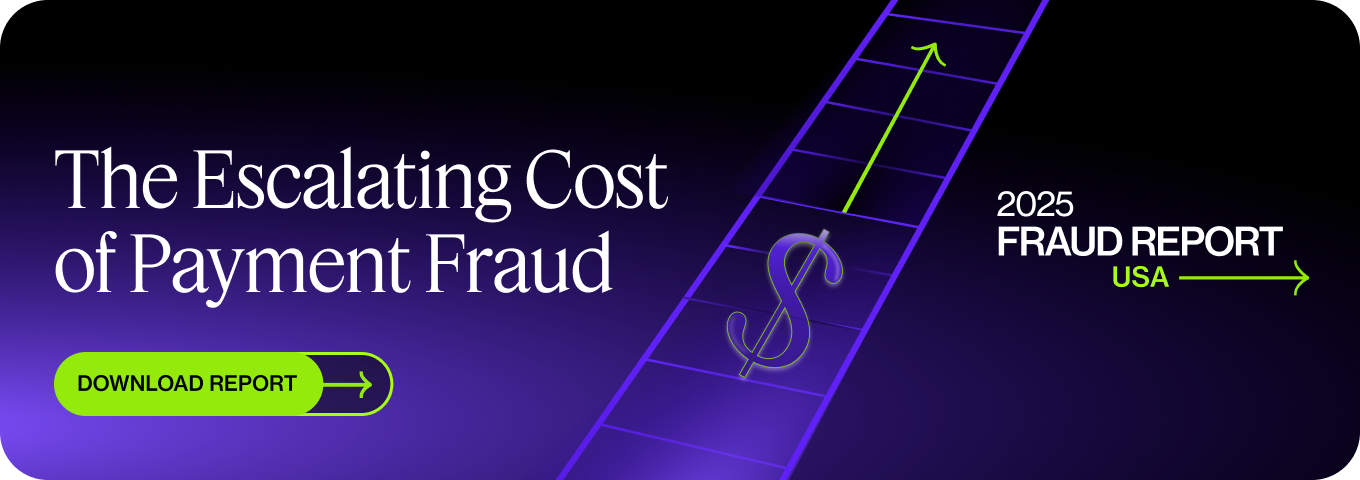In 2019, Facebook and Google were duped out of more than $100 million in a payment fraud scam. A man used a false company, a fake email account, and forged invoices to get the tech giants to part with tens of millions of dollars between 2013 and 2015. In this article, let’s go over the main strategies for effective payment fraud management…
Trustpair’s services can wipe out the risk of payment fraud thanks to automatic fraud detection and prevention. Our fraud detection platform checks banking data and real-time payments detects any suspicious activity, and blocks fraudulent payments before they’re executed. Request a demo to learn more!
1. Internal controls
Internal controls are procedures and rules in place to confirm that a business is efficient in reaching certain goals, that it complies with laws, follows rules, and reports figures reliably. It’s a compulsory strategy in payment fraud management.
Having internal controls in place can help to prevent payment fraud and other types of fraud because it is harder for fraudsters to take advantage of situations. It will add to your security.
Internal controls could refer to account software that restricts certain employees to sensitive information. For example, an employee may only be able to access data such as customer credit card information if they are of a certain level of seniority and they must have access to it.
Another example of a company’s internal controls could include vendor onboarding SOPs, which could include forms and the verification of documents to reduce operational risk.
2. Training
Regular fraud awareness sessions can keep employees in the loop of effective payment fraud management strategies. As fraud methods are ever-changing, training will ensure they are kept up to date on what the online payment fraud detection signs are and how to report fraudulent activity.
For example, IT company Ubiquiti announced it was the victim of a $46.7 million business email compromise (BEC) fraud. Fraudsters posed as workers at a third-party business while targeting Ubiquiti’s employees looking after finances.
To avoid cases similar to this, train your employees on how to spot BEC cases and what the tell-tale signs are so they think twice before transferring money.
A strategy like frequent training is important because fraud evolves so quickly. One minute you are focused on chargeback fraud following an e-commerce exchange and the next a new type of fraud comes along. Employees need insights into what is going on to learn about new types of fraud and the details.
However, keep in mind that even though training is important, it doesn’t replace automated fraud prevention solutions. Automation is the only bullet-proof strategy against payment fraud and fraudsters.
3. Segregation of duties
This means splitting tasks from one process across multiple employees. The segregation of duties should increase oversight and remove the opportunity for fraudsters to take advantage.
For example, it prevents one employee from handling all the financial records and accounts and being protective over this information – this is a red flag of payment fraud.
With several employees working across one task, it doesn’t give fraudsters a clear opportunity to steal funds from your business. It will stop one of the types of payment fraud from occurring.
As well as prevention of financial losses, managing payment fraud can also avoid:
- Reputational damage
- Legal consequences
- Disruption to staff and working environment
In Scotland, a woman in her workplace was tasked with paying invoices to assigned clients.
Following a review, she was found to have been paying invoices to a customer named ‘G Anderson. This ‘customer’ was actually her own alias and the money was going to herself.
In total, the woman stole $1,900,000 from a scrap metal company before she was caught.
This example highlights the importance of oversight from multiple members of staff to stop payment fraud and other crimes from occurring.
4. Conducting regular audits and checks
By conducting regular, unannounced checks on the accounts and finances, auditors should be able to spot suspicious transactions or anomalous dealings to protect against fraud.
For example in 2022 in Atlanta, Georgia, a restaurant manager used his company card for more than $300,000 to fund his personal lifestyle.
Analytics, audits, and account checks would identify, detect, and prevent a dodgy transaction and fraudulent activity on a company card like this. Businesses should have the necessary human and financial resources to conduct regular audits.
5. Using secure payment methods
Use secure payment methods such as encrypted online payments to give you protection. Credit cards, payment apps, and Automated Clearing House payments (ACH) are also more secure than cash or checks.
In 2023, a Wisconsin businessman lost $27,000 in a case of check fraud. It appeared fraudsters intercepted a check he sent to a former tenant via mail, which the tenant didn’t receive, and fraudsters created false checks from scratch.
The fake checks were successfully deposited – and the businessman lost around $27,000 to check fraud.
By switching to a more secure payment method, such as ACH or credit card, businesses are afforded more protection in the case of fraud. Plus, it’s much harder for cybercriminals to impersonate others over these payment networks.
6. Implementing automation software
By automating payment fraud prevention and working with payment fraud detection solutions like Trustpair, you can alleviate any human errors that may occur. More than four in five (82%) data breaches involved a human element.
Solutions like Trustpair avoids human error because any suspicious activity like transactions are automatically detected and fraudulent payments are blocked before they go any further. Thanks to ongoing account validation, our customers don’t fall victim to payment fraud.
The service seamlessly integrates with your existing technology to offer a great solution to payment fraud. Additional services include extensive customer support, detailed fraud analytics, and real-time fraud warnings.
For payment fraud detection, machine learning offers the highest level of confidence. It spots fraud by analyzing data and identifying anomalies. Trustpair is the platform you can trust to do this.
To learn more about payment fraud in the corporate world, download our latest report!
Recap
Implementing payment fraud management strategies is key in a business to avoid financial losses and reputational damage. Deploy internal controls, employee training, segregation of duties, audits, secure payment methods, and automation software. Trustpair’s fraud detection software is one of the solutions to payment fraud risk. Our solution offers detailed analytics, live fraud monitoring, and constant transaction control. No fraudster can pass our cutting-edge technology.






